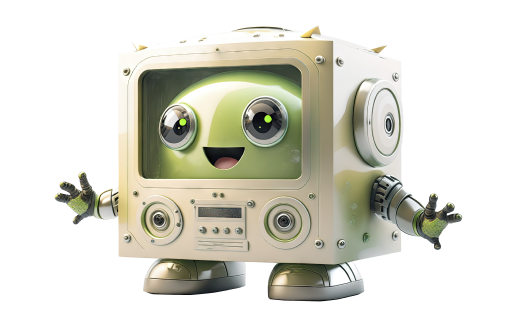Over 3.22 billion people play video games, making it one of the fastest-growing industries. After the COVID-19 epidemic, gaming businesses are competing more than ever to provide gamers with a flawless, exciting, and engaging gaming experience. But how can it be done? Artificial intelligence, machine learning, and other next-generation technologies are the keys to taking game testing to the next level.
All games, desktop or mobile, must be thoroughly tested. A game with flaws and glitches would fail in this competitive market. ML and AI in testing let game testers automate test cases, increasing game testing speed, quality, and efficiency.
Benefits of Using AI in Game Testing
AI can be used in games in many new and different ways. To create games that are quick and enjoyable to play, developers can use artificial intelligence and machine learning techniques. Using AI in software testing and game testing allows you to see how players move and interact with the world and change game features in real time, making games exciting and challenging.
Let’s dive a bit deeper into the benefits of AI in software testing and game testing, specifically.
Increased efficiency and productivity
AI game testing gives developers useful information about possible bugs, speed problems, and user experience, which helps them make smart decisions and improve games. Also, automation streamlines the testing process, enabling developers to prioritize essential aspects of game development.
Reduction in testing time
AI-powered automation tools can greatly decrease the amount of time and effort needed for testing, allowing for continuous testing during the entire development process. Developers can run tests more quickly and efficiently by automating testing processes. This helps development and feedback cycles happen more quickly.
Minimization of human errors
AI testing game technologies may automate a variety of testing procedures, guaranteeing extensive test coverage while lowering the need for human participation. AI-led quality assurance gets around the problems with human testing by making testing more accurate and faster. Even though checking games manually is helpful, it has its limits, especially as games get more complicated. AI gets around these problems by using automation of repetitive tasks, seamless scaling, and resource optimization.
Improvement in game quality
Using AI to create custom content based on users’ behavior takes games to a whole new level. AI programs give developers ideas for more realistic visual tests, which enrich the gameplay. Developers find value in improvements made by AI, and they use useful data to make their games better. This new technology not only makes users more engaged but also makes it easier for developers to elevate gaming experiences.
AI is being used more and more in quality assurance, which means better experiences for users and new ideas for how to make games in the future. With the help of AI-driven testing solutions, game developers can elevate their quality control, enhance test automation, and guarantee that their games meet top-notch standards of performance, efficiency, and popularity among players.
Key Solutions and Tools for Integrating AI in Game Testing
If you wonder how to implement AI in testing, let’s look at how AI is used in companies that test games to give you useful information, automate tasks, and improve performance.
#1 Automated testing with AI
AI programs let developers handle many testing jobs, such as running tests, analyzing results, and sending reports automatically. Automatic testing helps by reducing testing time, increasing the number of tests, getting and analyzing test results, identifying potential defects, freeing up human resources, and utilizing even non-working hours.
With AI automation tools, like Selenium or Appium with AI plugins, developers can increase testing efficiency, improve product quality, and boost the game development process.
#2 Machine learning-based testing
AI in performance testing can simulate user behavior and test various scenarios that provide valuable insights into game performance. In turn, ML-based testing can look at performance data, find trends, and suggest ways to improve performance based on those patterns. This helps developers make games run better. The most popular ML-based testing tools currently are Testim and Applitools.
#3 Pattern and anomaly recognition
Another important thing is that AI for game testing can help with pattern recognition. It identifies regular gameplay patterns and flags deviations from expected behavior. Also, AI spots statistical, visual, audio, and network anomalies. It’s like having a tireless teammate who never gets bored, which allows you to get your game to its fullest potential. Popular tools, for pattern and anomaly recognition are Splunk and Dynatrace.
#4 Test scenario generation
With AI testing services, game developers can get the most out of AI-powered tools like TARA AI and Functionize, which allow them to test scenarios automatically and analyze game mechanics, level design, and player interactions to create relevant test cases. AI can simulate thousands of gameplay scenarios, learn from gameplay data, generate regression test scenarios, and thoroughly analyze the results to ensure that it offers users a fair and balanced gaming experience.
Steps to Implement AI in Your Game Testing Workflow
If you are interested in how to use AI in software testing in gaming, here is a step-by-step guide on implementing AI-driven tools into your testing workflow:
- Analyze the existing testing process. Carefully analyze all the manual tasks your testers do, find bottlenecks, and identify pain points where AI can make a difference.
- Choose appropriate tools and solutions. Research available AI-powered testing tools. Look for solutions that align with your game development environment and testing goals. From automated test generators to visual recognition tools and statistical anomaly detectors, choose tools that fit your specific needs and integrate seamlessly with your existing testing infrastructure.
- Train the team. Ensure that your testing team understands that AI tools are the way to enhance them, not replace them. Do training sessions, encourage collaboration, and help to use AI power to the fullest.
- Implement and adapt. We advise you to start small, like adding AI bots to deal with repetitive regression tests, and then explore more. Monitor the impact of AI on testing efficiency and accuracy to give testers feedback so that they can adjust accordingly.
- Continuous improvement. AI game testing tools are not staying the same. They evolve so fast. It makes keeping up with all the new tech innovations a must in making your testing workflow truly efficient.
AI in testing is a strategic power that can help you be better equipped to deliver high-quality games that captivate players and stand out among competitors!
Challenges and Risks of Integrating AI in Game Testing
When AI is used for quality assurance in the game business, it comes with a few issues, just like any other new technology. There are a lot of difficulties that game makers and testers have to deal with before they can use AI for QA. Let’s explore the main ones:
- Integration difficulties. Integrating AI into quality assurance practices in game development is a complex process that requires careful planning and design of testing platforms. This involves aligning AI algorithms with existing tools and frameworks and ensuring compatibility with the software development process. Technological advancements in AI also present challenges, and developers must stay updated to fully utilize its potential. Despite these challenges, AI can improve quality assurance practices by investing in integration and staying updated with technology.
- Need for large amounts of data. For effective training of AI algorithms, they require a lot of relevant game-related data. Without sufficient data, AI models may struggle to generalize well. They might miss rare scenarios or exhibit false positives/negatives. To minimize it, it’s worth using synthetic data generation techniques that can augment real-world data.
- Risk of underestimating the human factor. While AI excels at repetitive tasks and pattern recognition, it lacks human judgment and intuition. Some aspects of game testing—such as assessing gameplay feel, emotional impact, or narrative coherence—are inherently subjective. Relying solely on AI might lead to overlooking critical issues that human testers would catch. So, the key is to have a balanced approach, aka combining AI-driven automation with skilled human testers.
- Potential security issues. Integrating AI introduces new attack vectors, like exploiting vulnerabilities in AI models or manipulating game data. Security breaches could compromise game integrity, player data, or even the gaming platform itself. To mitigate the risks, you should only use secure AI models and ensure that there is no sensitive info in training data.
AI is a powerful ally, but it’s not infallible. Combining AI’s strengths with human expertise ensures a comprehensive and effective game testing process.
Conclusion
AI in game testing enhances quality and guarantees the product is boosted to its fullest potential. Though there are some challenges to using AI in testing, it can help businesses speed up game creation and improve the player experience.
















